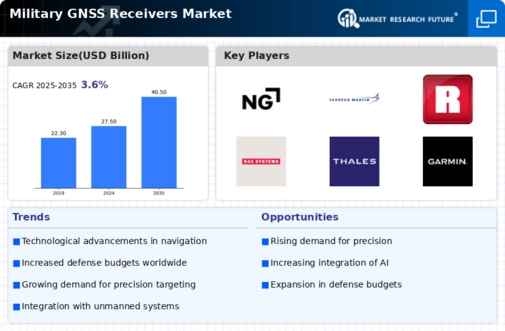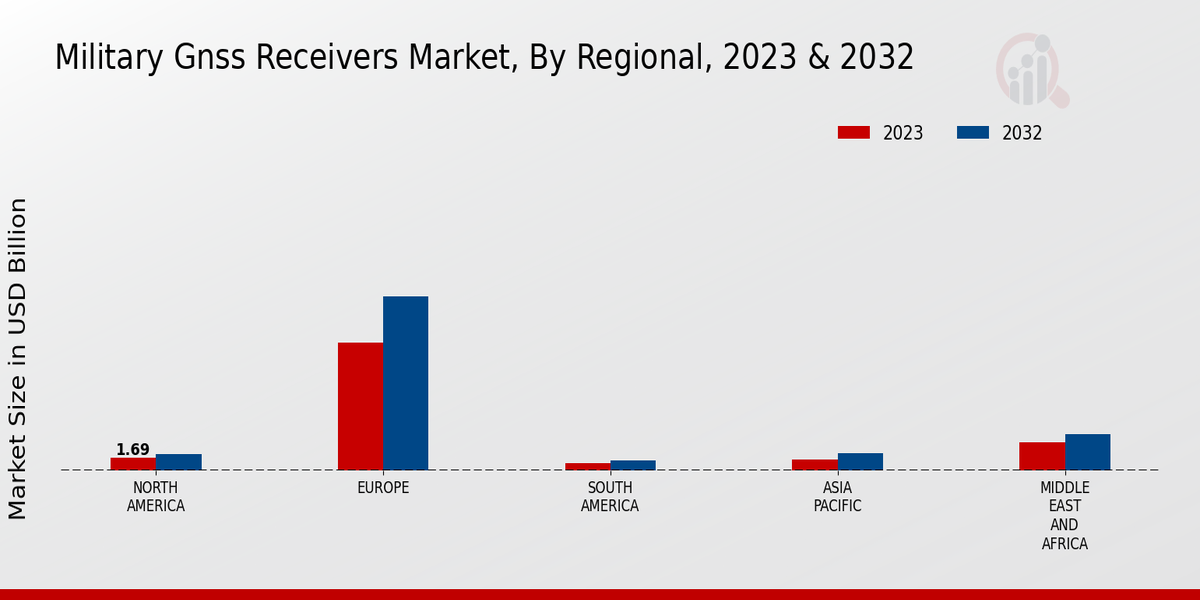Geopolitical Tensions
Geopolitical tensions and conflicts significantly influence the Global Military GNSS Receivers Market Industry. As nations face increasing security threats, there is a heightened focus on enhancing military readiness and operational capabilities. Countries are investing in advanced navigation systems to ensure strategic advantages in potential conflict scenarios. For example, the ongoing territorial disputes in various regions have prompted nations to bolster their defense systems, leading to increased demand for GNSS receivers. This trend is expected to sustain the market's growth, as military forces prioritize reliable navigation solutions to maintain operational effectiveness in uncertain environments.
Technological Advancements
Technological innovations play a pivotal role in shaping the Global Military GNSS Receivers Market Industry. The development of more precise and resilient GNSS systems, including multi-constellation and multi-frequency receivers, enhances navigation accuracy and reliability. These advancements are crucial for military operations, where precision is paramount. The integration of artificial intelligence and machine learning into GNSS technology further augments capabilities, enabling real-time data processing and improved situational awareness. As these technologies evolve, they are expected to drive market growth, with the industry projected to reach 40.5 USD Billion by 2035, indicating a strong trajectory fueled by continuous innovation.
Increasing Military Expenditure
The Global Military GNSS Receivers Market Industry is experiencing growth driven by rising military expenditures across various nations. Governments are allocating substantial budgets to enhance their defense capabilities, which includes investing in advanced navigation systems. For instance, in 2024, the market is projected to reach 27.5 USD Billion, reflecting a commitment to modernizing military assets. This trend is particularly evident in countries like the United States and China, where defense budgets are expanding to incorporate cutting-edge technologies. As military spending continues to rise, the demand for sophisticated GNSS receivers is likely to increase, supporting the overall growth of the industry.
Emerging Markets and Defense Modernization
Emerging markets are increasingly recognizing the importance of modernizing their defense capabilities, which is a significant driver for the Global Military GNSS Receivers Market Industry. Countries in regions such as Asia-Pacific and the Middle East are investing in advanced military technologies, including GNSS receivers, to enhance their operational effectiveness. This modernization trend is fueled by the need to address evolving security challenges and to align with global defense standards. As these nations enhance their military infrastructure, the demand for sophisticated navigation systems is expected to rise, contributing to the overall growth of the market.
Demand for Enhanced Navigation Capabilities
The demand for enhanced navigation capabilities is a key driver of the Global Military GNSS Receivers Market Industry. Modern military operations require precise positioning and timing information to execute missions effectively. The integration of GNSS technology into various military platforms, including aircraft, naval vessels, and ground vehicles, underscores the necessity for reliable navigation systems. As military strategies evolve, the need for advanced GNSS receivers that can operate in contested environments becomes increasingly critical. This demand is anticipated to contribute to a compound annual growth rate of 3.57% from 2025 to 2035, reflecting the industry's responsiveness to changing operational requirements.



























Leave a Comment